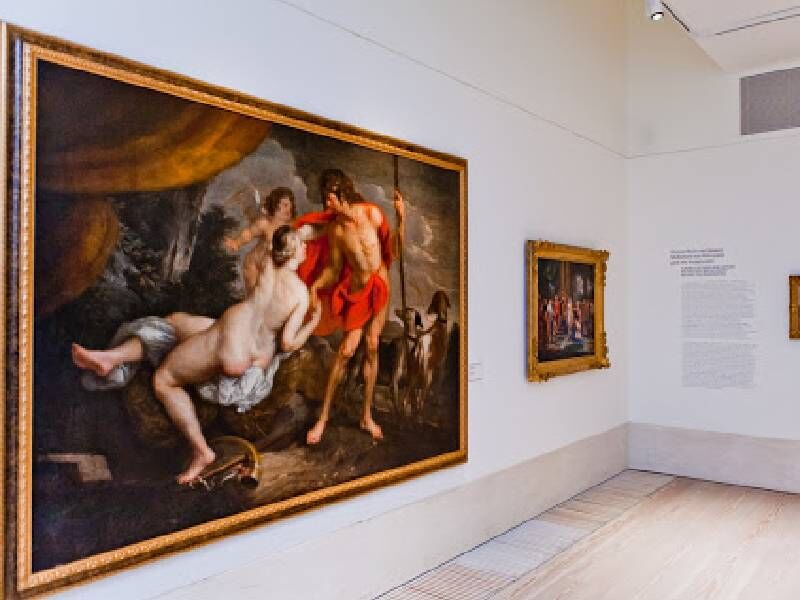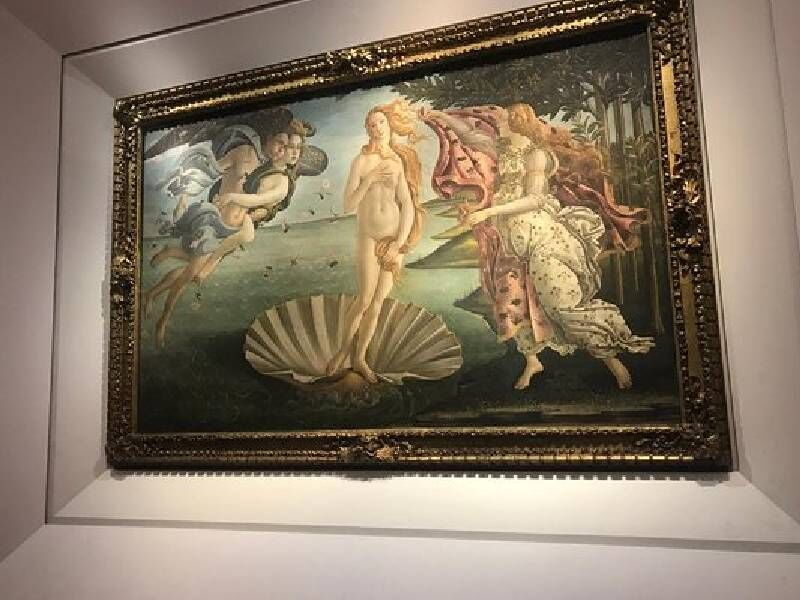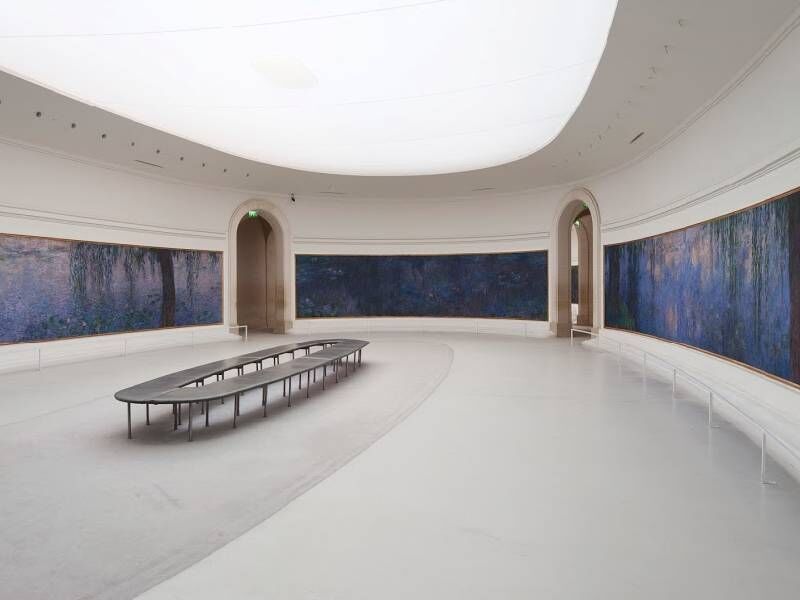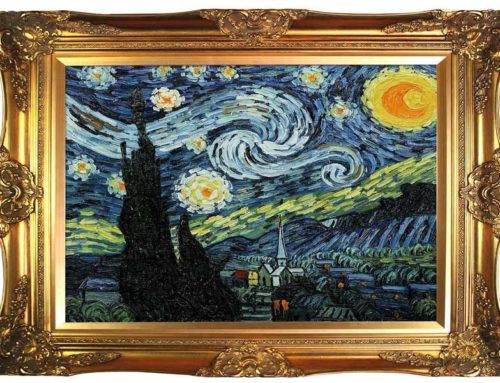Famous Historical Large Paintings
In the art world there are many stunning works of art in all various genres, shapes and sizes.
Art can range from a small sketch to towering sculptures and anything in between. For decades artist have continued to play with scale and through history some amazing large artworks have been produced.
Below is a list of the top 5 largest pieces of artwork in history, where they are exhibited and the stunning framework that surrounds them.

Image credit: http://cyprusfortravellers.net/en/review/leventis-art-gallery-nicosia

Image credit: https://www.christies.com/features/Andrew-Graham-Dixon-on-The-Night-Watch-by-Rembrandt-9786-1.aspx
The Night Watch by Rembrandt
This painting was completed in 1642 by Rembrandt and was commissioned around 1639 by Captain Banninck Cocq and seventeen members of his Kloveniers. The painting is famous for 3 things:
- It’s colossal size, measuring 363 cm × 437 cm (11.91 ft × 14.34 ft)
- Dramatic use of light and shadow
- Perception of motion
The painting shows Rembrandts amazing abilities and talents showcasing both his theatrical treatment of light and his well-known preference for portraiture on a grand scale.
The painting is housed in a large beautiful frame that is very plain and in keeping with the darkness of the painting. It is a large wooden frame varnished in a dark colour to blend in with the portrait so the eye isnt lead away from the picture itself. The painting is on permanent loan at the Rijksmuseum in Amsterdam.
Liberty Leading the People by Eugène Delacroix
This painting was inspired by the second French Revolution. Painted by Eugène Delacroix in 1830 to commemorate the toppling of King Charles X of France. Whilst painting the piece Delacroix was said to have quoted “I may not have fought for my country but at least I shall have painted for her.”
The painting measures a huge 8′ 6″ x 10′ 8″ (262cm × 329cm) this painting makes a powerful statement not just in size but what it symbolises.
Delacroix painted a goddess like figure that is also perceived as a warrior striding barefoot across corpses. Many people interpret the mixed class of people surrounding her as all having the same determination in their eyes which shows that they are all fighting for the same thing no matter what class they are.
Liberty Leading The People is house is a beautiful gold leaf gilded frame with stunning carved details to each corner of the frame to really showcase the painting and its grandeur in all its glory. The painting is currently housed at the Louvre in Paris.

Image credit: https://www.franciestoutamirephotography.com/p1024046270/h3593F168#h3593f168

Image credit: https://www.tripadvisor.com/LocationPhotoDirectLink-g187895-d12030145-i331715928-Italy_With_Us-Florence_Tuscany.html
The Birth of Venus by Sandro Botticelli
Painted by italian renaissance artist Sandro Botticelli, The Birth Of Venus is another large scale painting measuring 5′8″ x 9′2″ (177cm x 280cm).
Although there isn’t an exact date for this being painted we know that it is somewhere between 1482 and 1485. Painted on two canvases that were carefully and discreetly sewn together, the painting shows the mythological goddess of love and beauty Venus arriving at the shore after her birth in her signature scallop shell. The painting is known for not only its scale but its vibrant use of color palettes as well as the artists delicate brushwork.
The frame that surrounds this beautiful painting is equally as stunning in its own right, the frame has a very ancient mythical feel to it. Completely gilded in gold and carved fully it really is a show stopper. Firstly carved the whole way around the frame there is square mosaic style notches on the outer side giving a scale like effect and in each corner and central section there is a stunning detailed leaf and vine carved which leads in to the inner edged carvings. These look almost like little leaf like buds, it really is stunning craftsmanship.
The painting and its stunning frame can be viewed at the Uffizi Gallery in Italy.
George Washington Crossing The Delaware by Emanuel Leutze
Washington Crossing The Delaware was painted by Emanuel Leutze in 1850, the painting commemorates George Washington crossing the Delaware River with the Continental Army during the American Revolutionary War. This painting is one of the most recognised images in the history of American modern art.
The painting shows General Washington and his two officers standing upright in the boat in their blue trademark continental officer coats. The boat is filled with nine other men all which appear to be members of the militia. Each individual man in this painting is shown to be from another race, class or profession and this can be seen by the clothes in which they are wearing, for example a checkerboard bonnet of a Scotsman or farmers distinguished by their broad-brimmed hats. This is to show the all-inclusive nature of the Colonial cause in the American Revolutionary War.
This painting is of monumental scale measuring a huge 12 feet x 21 feet. The giant scale of the painting is matched by the importance of the historical event it shows. The frame was hand built around the painting and is made of basswood, each piece was hand carved. It has a giant eagle sitting on top of the frame which was carved separately and attached once completed. The crest contains many objects specific to war. The frame when finished was covered in gold leaf.
Washington Crossing The Delaware is currently on display at the Metropolitan Museum Of Art.

Image credit: https://www.pinterest.co.uk/pin/538743174173307523/

Image credit: https://keithparry.org/2014/08/18/musee-de-lorangerie-paris/
The Water Lilies Series by Claude Monet
Claude Monet was a French Impressionist who painted around 250 masterpieces from 1883 until his death 43 years later. Monet lived in Giverny, Northern france and had a beautiful Japanese style garden at his home which he described as “his most beautiful masterpiece”. This garden was the main inspiration behind many of Monet’s pieces of art and the water lilies were usually the main subject featured in many of his paintings.
The painting itself is set over 8 canvases and is one continuous piece that all join together. These are displayed in a unique curve. If all of the paintings were placed side by side in a straight line it would measure around 300 feet.
Displayed in the Musée de l’Orangerie in Paris, the paintings are housed in a very elegant and plain gold frame which was handmade in a slightly curved way. They are hung on a curved plain white wall to really showcase the frame and artwork.






Leave A Comment